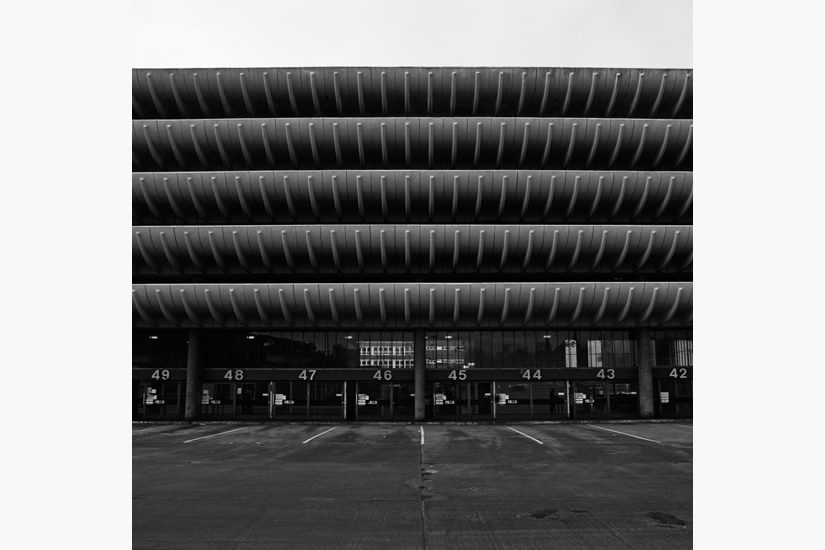 When travelling along the dock road out of Liverpool there is a surprising structure of concrete which dominates the corner of Bankfield street and Derby road. It surely makes one of the must unusual and unique dock buildings in Liverpool, a city with a rich selection of dock buildings of all ages. The building was built in 1955-57 by the Tate and Lyle's engineering department to store sugar as it came in to the port of Liverpool. The building is of a very simplistic design as was the fashion of the 1950's with a single chamber tunnel vault with entrance and windows at both ends. It has a very elegant form, although the corrugated iron addition to the top of the building detracts from this elegance. The building was listed at grade 2* in 1992 by English Heritage as good example of reinforced concrete parabolic tunnel vaulted storage unit.
When travelling along the dock road out of Liverpool there is a surprising structure of concrete which dominates the corner of Bankfield street and Derby road. It surely makes one of the must unusual and unique dock buildings in Liverpool, a city with a rich selection of dock buildings of all ages. The building was built in 1955-57 by the Tate and Lyle's engineering department to store sugar as it came in to the port of Liverpool. The building is of a very simplistic design as was the fashion of the 1950's with a single chamber tunnel vault with entrance and windows at both ends. It has a very elegant form, although the corrugated iron addition to the top of the building detracts from this elegance. The building was listed at grade 2* in 1992 by English Heritage as good example of reinforced concrete parabolic tunnel vaulted storage unit.The building no longer serves its original purpose of storing sugar as more modern form of storage have been adopted. For many years it was used as a lorry park for lorries in the docks. More recently the building stands redundant and at risk. It is a hard building to covert to a new purpose due to the expanse of space and the lack of windows, which are only on the two ends of the building. However I could imagine the building be put to a good and effective new use, a new concert venue or exhibition hall perhaps?
The building could be considered a modern day equivalent to the Victorian Tobacco warehouse of Stanley dock (also on the dock road), due to its scale and purpose for one product storage. By comparison this building too is hard to find a new use due to its size and lack of light. Although there are no issues with 2 meter high floors in the Sugar silo, an issue long made the tobacco warehouse unsuitable for conversion.
The building has appeared in many books and publications including 1001 buildings you must see before you die Mark Irving, which perhaps suggests it is appreciated by many people who believe like English Heritage it is an important building worthy of preservation.





















